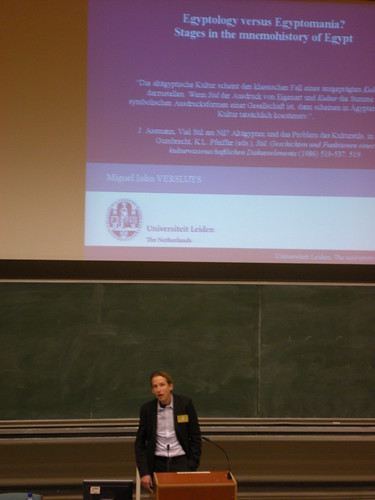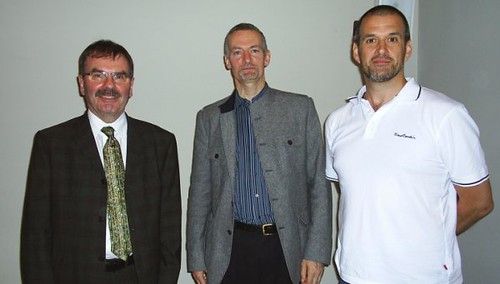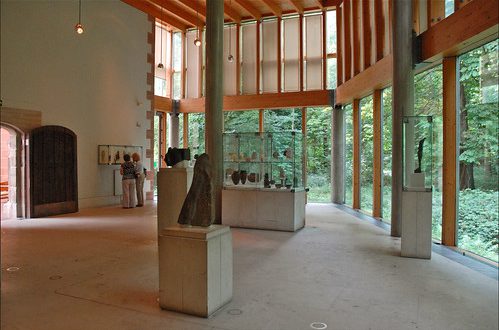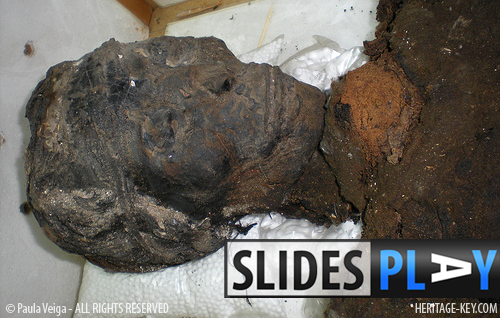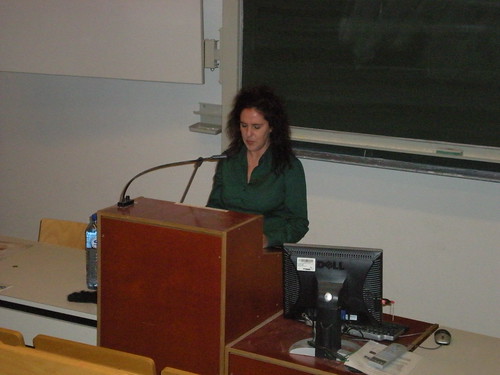 CRE XI’s Religion Day – if you’ve missed day 1 of the Egyptology conference, read up here – started off with Susanne Tpfer from Leipzig. In this very very interesting session, we all heard about how some papyri describing embalming rituals can have direct connections to religion myths as the body and the afterlife were treated with the best care.
CRE XI’s Religion Day – if you’ve missed day 1 of the Egyptology conference, read up here – started off with Susanne Tpfer from Leipzig. In this very very interesting session, we all heard about how some papyri describing embalming rituals can have direct connections to religion myths as the body and the afterlife were treated with the best care.
Many publications have been published on Papyrus Boulaq 3 in Cairo, from 1871 to 2009. The position of body parts, the instructions on the application of anointments and other products onto the body of the deceased, how the bandages should be wrapped and of course the words to be recited over these proceedings as nothing was effective in ancient Egypt if it did not include magic. The body was prepared first and the head was done afterwards with special requisitions. Osiris is mentioned in the recitations as all deceased become Osiris at some point.
The session continued with Jared Krebsbach from Memphis, talking about how and why the Persians in Egypt have chosen Atum over Osiris to be their main worshipped god.
Osiris green: his body represented in medicinal plants
I presented my own research after this and explained how the deification of plants can be done by analyzing plant references in religious papyri and comparing those with the ingredients from medical papyris prescriptions. Osiris is then portrayed to be green not only as the god of agricultural since Neolithic times but also as the mentor of rejuvenation for ancient Egyptians as well. Egypt was called kemet in ancient times which means the black land and uses green as its national colour today.
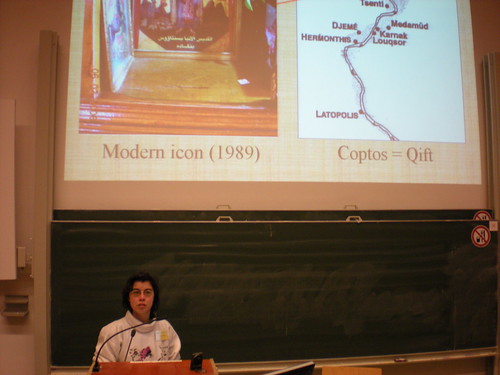 In the afternoon some sessions were cancelled due to bad weather in the UK which prevented some speakers to fly but the early Christianity session was one of the best for me, in this conference so far.
In the afternoon some sessions were cancelled due to bad weather in the UK which prevented some speakers to fly but the early Christianity session was one of the best for me, in this conference so far.
Early Christianity in Egypt
Renate Dekker had the chance to present her own paper on Pesynthios, a Coptic bishop, and she showed the audience how the research is going reading letters from the bishop scattered around the world. Fragments are to be found in Florence, paris and England as well as new York and Egypt of course.
She reviewed Walter Crums research on Coptic language as he studied some of these letters, and she explained how the project in Leiden is aiming to get accurate translations, list names and toponyms, identify scribes, reconstruct the social context where the letters existed, and distinguish between the various types of letters. Some of the papyri where the letters are written were reused so we have a letter to one bishop in the verso and another to another bishop in the recto.
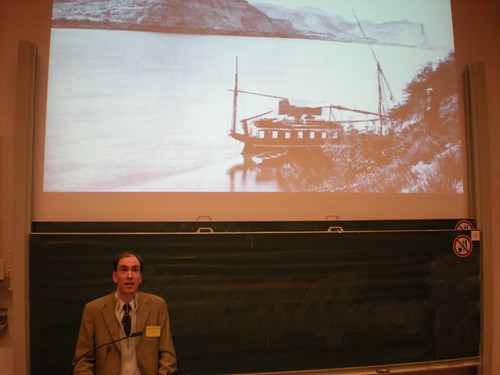 Next Joost Hagen showed us the stage of his own research on Nubian churches and the documents found in buildings now under the waters of the Nile. The chronology of the monasteries use the Muslims invasions, the Ottomans presence, and the dichotomy between Greek and Coptic in Christian Egypt, kings that could be bishops and the amount of materials found in Qasr Ibrim: textiles, pottery, and documents.
Next Joost Hagen showed us the stage of his own research on Nubian churches and the documents found in buildings now under the waters of the Nile. The chronology of the monasteries use the Muslims invasions, the Ottomans presence, and the dichotomy between Greek and Coptic in Christian Egypt, kings that could be bishops and the amount of materials found in Qasr Ibrim: textiles, pottery, and documents.
Virtual Reconstruction of Qubbat al-Hawa
Renate Dekker returned to present Howard Middleton-Jones work on the Coptic database project, more precisely on the virtual reconstruction of Qubbat al-Hawa church. Part of a monastery, this church got its name from the geographical position (it means the mountain of wind) and also the patrons name. Built in the Xth century and consecrated in the XIIth century. Using high resolution images it is possible to help the conservation projects as well as capture the art and inscriptions in situ.
Egyptology vs Egyptomania
Our evening lecture of today, given by Miguel Versluys, focused on the terms Egyptology versus Egyptomania. Egyptomania is thought to be everything that is not the real thing as he stated.
The discussion included, for instance, Alexandria which is geographically located in Egypt but associated with classical culture. Egyptian symbols and language was widely spread among the Mediterranean world and foreign rulers in Egypt used Egyptian styles and motifs in Egypt.
How did the Egyptian people felt about that? The same person could have Greek and Egyptian names. Egyptian artifacts provenance and dating is done how? Was it made in Egypt?
Rome is considered to be a successor culture to Egypt. And Egyptian is something in itself. Alexandria shops had clients all over the world and manufactured pieces both Egyptian and Classical even the Macedonian kings like Alexander the great used Egyptian iconography to identify himself with Egyptian power.
We then moved on the restaurant for our dinner party which was extraordinary; food was exquisite and service was great! We all felt very cozy in there and chatted along the eveningmore to follow tomorrow on the last day. Dont miss out the report for tomorrow! In the mean while, you can also read up on the highlights of CREXI’s day one.

